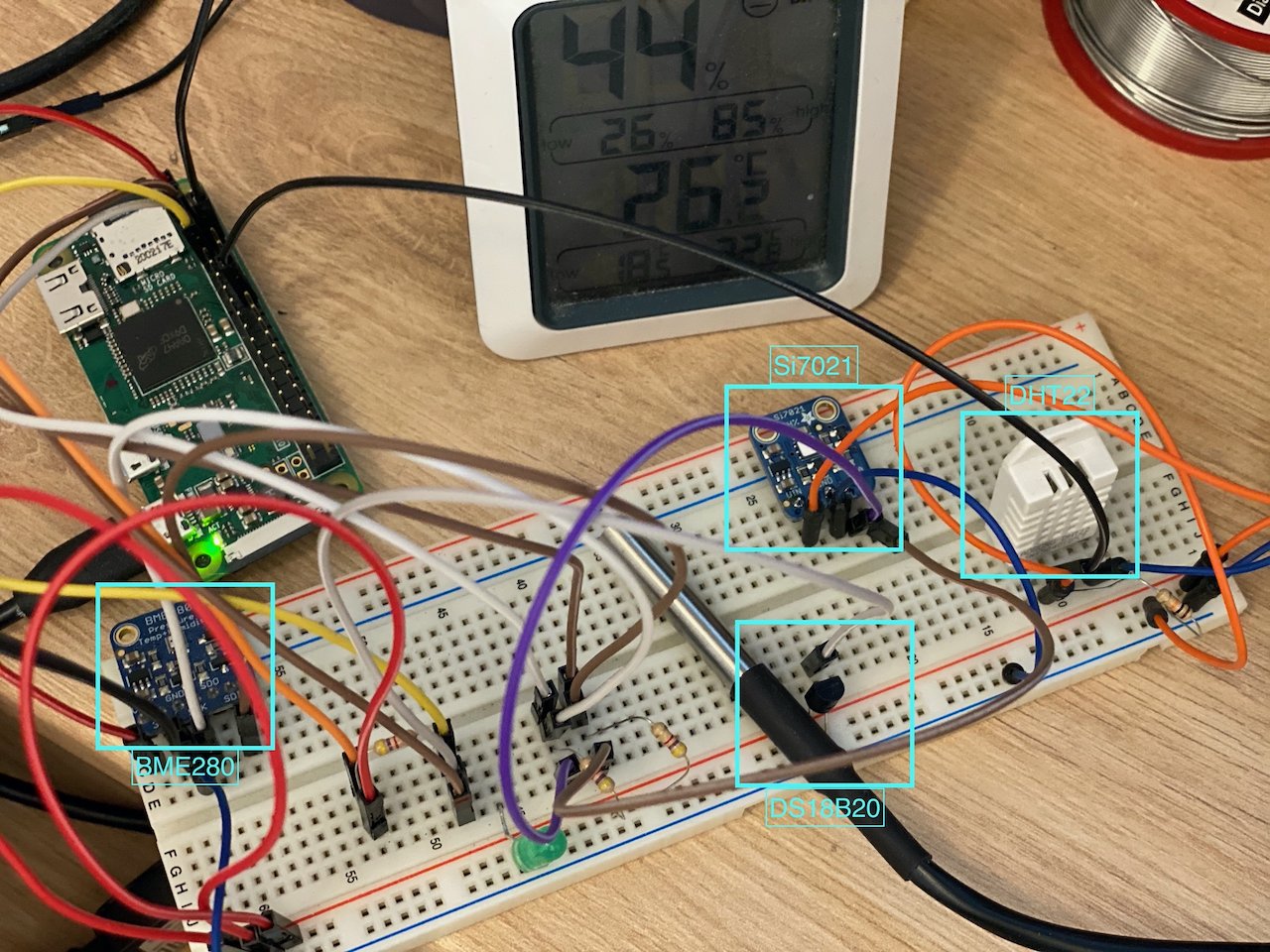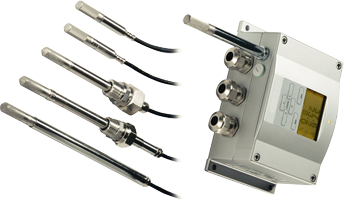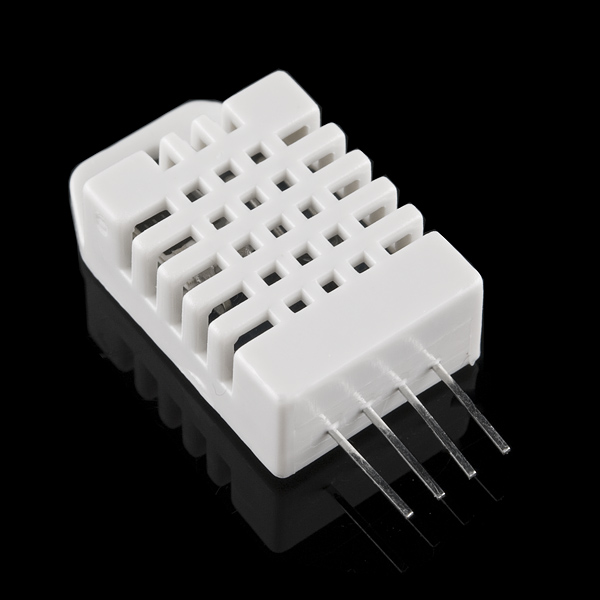Temperature and humidity sensors can be found almost anywhere around us. These sensors are capable of measuring the water vapor in the air and the temperature of the environment. But how do they work and what are their different types? Continue reading this article from Linquip and we will explain everything you need to know about temperature and humidity sensors.
What are temperature and humidity sensors?
These sensors have been designed for various applications to measure the humidity as well as the temperature of the environment. They do so by finding the amount of water vapor present in the air around the sensors. The amount of moisture in the gas can be a mixture of different elements including nitrogen, water vapor, argon, etc. Since humidity can have huge effects on different biological, chemical, and physical processes, it should be measured and controlled in different industries and hence, there’s a need for these sensors to help us out.
How do temperature and humidity sensors work?
Temperature and humidity sensors have two different ways of collecting data and measuring humidity and temperature. One type measures Relative Humidity (also known as RH) and the other type measures Absolute Humidity (also known as AH). They can also be categorized based on their size. Small sensors are used for smaller purposes and larger ones are usually used for industrial applications.
Some of these sensors are interfaced with a micro-controller for measuring the related data instantaneously. For example, the DHT11 temperature and humidity sensor are one of these digital temperature and humidity sensors with Arduino as its interface. It can also use other micro-controllers such as Raspberry Pi, etc.
These sensors have capacitive humidity sensing elements as well as a thermistor which is used to sense the environment’s temperature. There are two electrodes in the humidity sensing element (capacitor) and a moisture-holding substrate works as a dielectric between these two electrodes. Whenever there is a change in the humidity levels, changes occur to the capacitance value accordingly. There’s an integrated IC in the unit that receives the measured data and processes the resistance values that have been changed due to the change in humidity and converts the data into a digital form for the readers. So, this is how digital temperature and humidity sensors such as DHT11 measure humidity. But what about the temperature?
The easiest explanation would be that these sensors use a negative temperature coefficient thermistor for measuring temperature. When there’s an increase in the temperature of the environment, this element would cause a decrease in its resistance value.
Moreover, some temperature and humidity sensors with displays have been designed which provide visual reporting of the humidity and the temperature and create a better experience for those using such sensors. Some of the newer temperature and humidity sensors with Wi-Fi have become popular these days as well that connect over Wi-Fi (or Bluetooth) enabling you to remotely monitor the humidity and the temperature of the place you’ve placed the sensor in with the help of an app that you can install on your phone. These sensors are great for when you are away and need to monitor the temperature and humidity of the place. They have pretty good accuracy too!
The Accuracy of temperature and humidity sensors
The accuracy of different temperature and humidity sensors differ from each other. For example, the DHT11 humidity sensor has an accuracy of 5% capable of measuring humidity up to 80 percent and its temperature sensor has a 2-degree accuracy with the ability to measure up to 50 degrees Celsius.
That is why for industries that are highly sensitive to keeping the temperature and humidity at a certain level, sensors with high accuracy are used because they provide more accurate and more reliable data. For example, meteorological and scientific research departments need sensors with full humidity measurements ranging from zero to 100 percent RH. Other fields don’t require the full range for their application purposes. You should also know that the sensors that have a higher range usually cost higher than the ones with a lower measurement range. For example, the DHT11 we mentioned earlier is usually sufficient for a wide variety of applications and it costs less than the ones used for more sensitive applications. If you need to have more accuracy but still don’t have a great budget, the next best thing would be DHT22 temperature and humidity sensors.
Humidity and temperature sensor applications
As we mentioned above, these sensors can be found in many devices and they have a wide variety of applications! They can even help patients who have trouble breathing by enabling them to keep the humidity and the temperature of the place at the optimum level. To predict weather conditions, weather stations use these sensors too. They can be used in heating systems, ventilation systems, and even air conditioning systems. These sensors can also be used for greenhouses where the humidity values should be checked constantly. Museums can benefit from them as well since the artifacts and the objects in these places should be kept under certain conditions.
Now you know all there’s to know about temperature and humidity sensors and their different models. Have you ever worked with these sensors directly? Comment below and let us know what you think about them and share your experience with us. Plus, feel free to sign up on Linquip to ask any questions you have from our experts who have years of experience in this industry.
Read More On Linquip
- Difference Between Actuator and Sensor: The Ultimate Guide
- What is Humidity Sensor: Your go-to Guide on humidity Sensors!
- Types of Humidity Sensors: A Full Explanation of The Most Common Types
- Control sensor: What it is and How it works
- Types of Sensors Detectors/Transducers: An Entire Guide
- Difference Between Actuator and Sensor: The Ultimate Guide
- What is a Differential Pressure Sensor?: An Ultimate Guide
- 5 Types of Proximity Sensors (Application and Advantages)
- Temperature Sensors: Types, working principle & Practical Applications
- Transducer vs. Sensor: Basic Differences & Advantages of Them
- Types of Temperature Sensors and Their Application







I have a textile factory with high roofs, is there a special height/ area these sensors should be placed at ?
My garment customer is asking
appreciate your comments
Thanks for visiting our website. You can visit our Industrial Equipment page, where you can find various pumps based on your application and demand. You can also visit our expert page and take advice from hundreds of professionals on your issue.